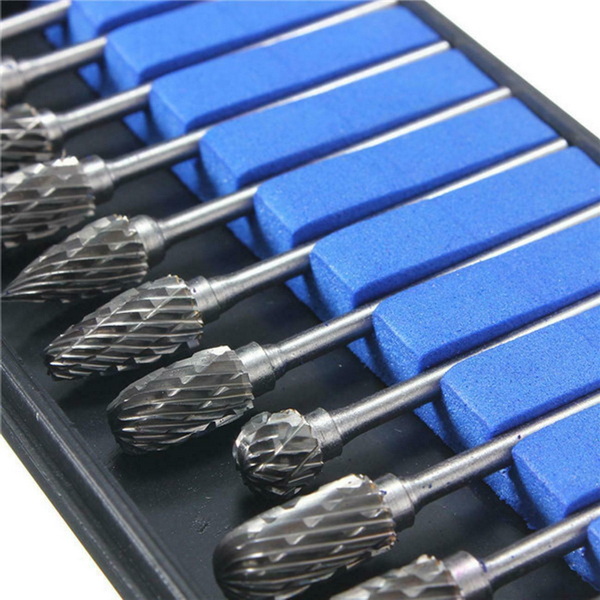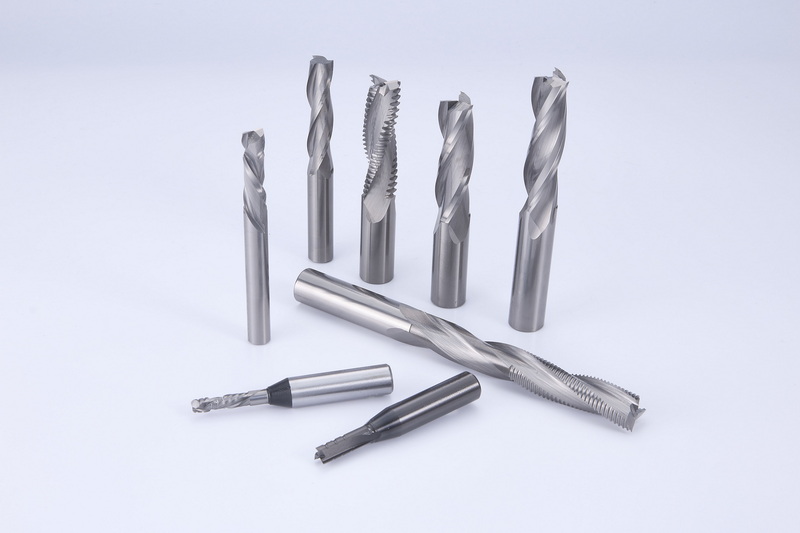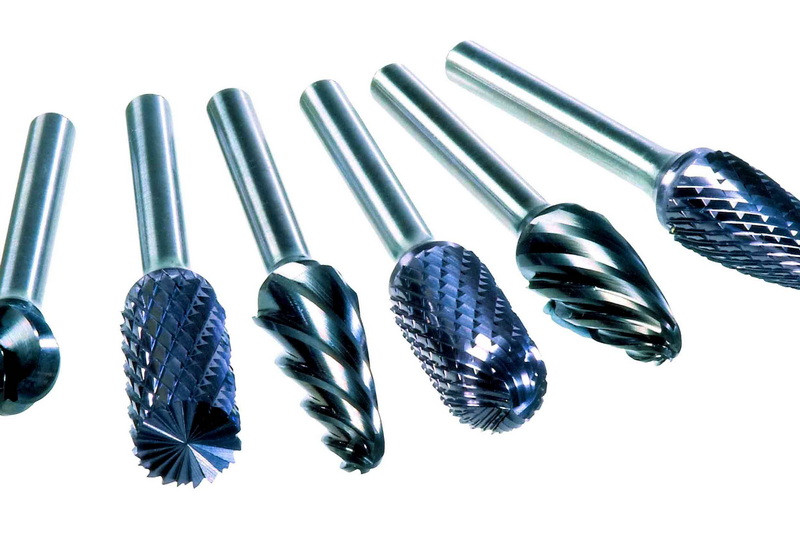Content Menu
● Introduction to Tungsten Carbide
● Properties of Tungsten Carbide
● How Is Tungsten Carbide Made?
● Industrial Applications
>> Cutting Tools
>> Mining and Construction Equipment
>> Wear-Resistant Parts
>> Oil and Gas Industry
● Consumer Applications
>> Jewelry
>> Sports and Recreation
● Specialized and Emerging Uses
● Tungsten Carbide: Environmental Impact and Sustainability
>> Recycling and Reclamation
>> Responsible Sourcing
>> Longevity and Efficiency
● Conclusion
● FAQ: Tungsten Carbide Applications and Properties
>> 1. What makes tungsten carbide so hard and durable?
>> 2. Why is tungsten carbide preferred over steel for cutting tools?
>> 3. Can tungsten carbide be recycled?
>> 4. Is tungsten carbide safe for jewelry and daily wear?
>> 5. What industries use tungsten carbide the most?
● Citations:
Tungsten carbide, a compound formed from equal parts tungsten and carbon, is one of the most remarkable materials in modern industry. Renowned for its extraordinary hardness, durability, and resistance to heat and wear, tungsten carbide has become indispensable across a vast range of applications. From the tips of industrial drills that bore through the hardest rocks to elegant jewelry that resists scratches and tarnish, tungsten carbide's unique properties make it the material of choice for demanding environments and precision engineering.
In this comprehensive article, we will explore what is made of tungsten carbide, delve into its properties, manufacturing processes, and showcase its diverse applications with visual examples. We will also address frequently asked questions to provide a thorough understanding of why tungsten carbide stands out among advanced materials.

Introduction to Tungsten Carbide
Tungsten carbide (chemical formula WC) is a dense, metallike compound that is almost as hard as diamond and significantly harder than steel. In its basic form, it appears as a fine gray powder, but it can be pressed and sintered into solid shapes for various applications. The material is often referred to simply as "carbide" in industrial settings.
Properties of Tungsten Carbide
Tungsten carbide's popularity stems from a combination of exceptional properties:
- Extreme Hardness: Ranks 9–9.5 on the Mohs scale, second only to diamond.
- High Density: About 15.6 g/cm³, twice as dense as steel.
- High Melting Point: Approximately 2,870°C (5,198°F).
- Wear Resistance: Maintains sharpness and resists abrasion far better than most metals.
- Thermal Stability: Performs reliably at high temperatures.
- Corrosion Resistance: Chemically inert to most acids and environments.
- Stiffness: Young's modulus of 530–700 GPa, making it much stiffer than steel.
These properties make tungsten carbide ideal for applications where conventional materials would fail due to wear, heat, or mechanical stress.
How Is Tungsten Carbide Made?
The production of tungsten carbide involves several precise steps:
1. Raw Materials: Tungsten ore is processed into tungsten oxide, which is then reduced to tungsten metal powder. Carbon sources like graphite are mixed with the tungsten powder.
2. Carburization: The mixture is heated in a graphite furnace at 1,300–1,600°C, causing the tungsten and carbon to react and form tungsten carbide powder.
3. Mixing and Milling: The powder is ball-milled to ensure uniform particle size.
4. Compacting and Sintering: The powder is pressed into molds and sintered at high temperatures, often with a metallic binder (like cobalt), to form dense, solid shapes.
This process yields a material that can be further machined or shaped for specific uses.
Industrial Applications
Tungsten carbide's industrial significance cannot be overstated. Its unique combination of hardness, toughness, and resistance to wear and heat makes it invaluable in sectors where performance and longevity are critical.
Cutting Tools
One of the most significant uses of tungsten carbide is in the manufacture of cutting tools for machining, drilling, milling, and turning. These tools include:
- Drill Bits: Used for metalworking, woodworking, masonry, and geological exploration.
- End Mills and Milling Inserts: Essential for precision milling operations.
- Saw Blades: Circular saws with tungsten carbide teeth cut through metals, wood, and composites.
- Rotary Burrs and Reamers: Used for shaping, deburring, and finishing materials.
These tools are essential in manufacturing, automotive, aerospace, and construction industries, where precision and durability are paramount. Tungsten carbide tools can machine hardened steels, cast iron, non-ferrous metals, and even composites, making them versatile and cost-effective.
Mining and Construction Equipment
Tungsten carbide's toughness and abrasion resistance make it the preferred material for:
- Rock Drilling Bits: Used in mining, oil, and gas exploration.
- Road Planing and Trenching Tools: For cutting through asphalt and concrete.
- Excavator Teeth and Bucket Edges: Enhanced durability for heavy-duty construction.
These applications are vital for infrastructure development and resource extraction. The ability of tungsten carbide components to maintain their integrity under intense mechanical stress and abrasive conditions significantly reduces downtime and maintenance costs.
Wear-Resistant Parts
Many machine components are subject to constant wear and friction. Tungsten carbide is used to manufacture:
- Valve Seats and Pump Components: For the oil, gas, and chemical industries.
- Nozzles and Liners: In sandblasting, water jet cutting, and slurry pumps.
- Bearings and Bushings: For high-load, high-wear environments.
These parts ensure the reliability and efficiency of machines operating in harsh environments, where traditional materials would quickly degrade.
Oil and Gas Industry
In the oil and gas sector, tungsten carbide is used for:
- Drilling Equipment: Drill bits, stabilizers, and wear sleeves.
- Valve Components: For high-pressure, high-wear applications.
The extreme conditions encountered in drilling and extraction—high pressure, abrasive fluids, and corrosive environments—demand materials that can withstand these stresses, making tungsten carbide an industry standard.

Consumer Applications
Tungsten carbide's properties are not limited to heavy industry. Its unique combination of beauty and resilience has led to a surge in consumer applications.
Jewelry
Tungsten carbide's durability and scratch resistance have made it a popular choice for:
- Rings and Wedding Bands: Attractive, hypoallergenic, and long-lasting.
- Bracelets and Pendants: Fashionable and resistant to tarnish.
Jewelry made from tungsten carbide is celebrated for its modern aesthetic and ability to maintain a polished finish for years. It is especially popular for men's wedding bands and fashion rings, offering a contemporary alternative to gold, silver, or platinum.
Sports and Recreation
- Fishing Weights: High density allows for compact, streamlined weights.
- Golf Club Weights: Used to adjust balance and swing characteristics.
- Darts and Ballast: For racing cars and aircraft, where compact weight is needed.
In sports, the high density and compactness of tungsten carbide are leveraged to enhance performance and provide athletes with equipment that offers superior balance and control.
Specialized and Emerging Uses
As technology advances, new uses for tungsten carbide continue to emerge, further expanding its impact across industries.
- Ammunition: Armor-piercing projectiles and kinetic penetrators use tungsten carbide cores for their density and hardness.
- Medical Tools: Surgical instruments and dental burs for precision and longevity.
- Electronics: Used in specialized alloys and contacts for its conductivity and wear resistance.
- Catalysts: Tungsten carbide exhibits catalytic properties similar to platinum, useful in chemical processing.
- Precision Weights and Measurement Standards: Used in laboratories for calibration due to its stability and density.
These applications highlight tungsten carbide's versatility and importance in fields where performance, safety, and reliability are non-negotiable.
Tungsten Carbide: Environmental Impact and Sustainability
As the demand for tungsten carbide continues to grow, questions about its environmental impact and sustainability have become increasingly important.
Recycling and Reclamation
Tungsten carbide is highly recyclable. Used tools and scrap materials can be collected, processed, and reintroduced into the manufacturing cycle. This not only conserves valuable resources but also reduces the environmental footprint associated with mining and refining new tungsten.
Responsible Sourcing
The mining of tungsten, particularly in conflict regions, has raised ethical concerns. Leading manufacturers are now prioritizing responsible sourcing and traceability to ensure that tungsten is mined and processed in ways that minimize environmental harm and support local communities.
Longevity and Efficiency
Tungsten carbide's exceptional durability means that products last longer and require less frequent replacement. This longevity translates into less waste and lower overall resource consumption, supporting the principles of sustainable manufacturing.
Conclusion
Tungsten carbide stands as a testament to the power of material science. Its unparalleled hardness, density, and resistance to wear and heat have made it a cornerstone of modern industry. From the drill bits that carve tunnels through mountains to the rings that symbolize everlasting love, tungsten carbide's versatility is unmatched. Its applications span from heavy industry and infrastructure to consumer goods and emerging technologies. As technology advances and new applications emerge, tungsten carbide will continue to play a pivotal role in shaping the tools and products that define our world.

FAQ: Tungsten Carbide Applications and Properties
1. What makes tungsten carbide so hard and durable?
Tungsten carbide's hardness is due to its strong chemical bonds between tungsten and carbon atoms, forming a dense crystal structure. This makes it highly resistant to scratching, abrasion, and deformation, ranking just below diamond on the Mohs scale.
2. Why is tungsten carbide preferred over steel for cutting tools?
Tungsten carbide is much harder and more wear-resistant than steel. It maintains a sharp edge longer, withstands higher temperatures, and is ideal for high-precision, high-volume machining where steel tools would quickly wear out.
3. Can tungsten carbide be recycled?
Yes, tungsten carbide is highly recyclable. Worn-out tools and scrap can be reclaimed and processed into new products, making it an environmentally and economically valuable material.
4. Is tungsten carbide safe for jewelry and daily wear?
Tungsten carbide is hypoallergenic and does not tarnish, making it safe and popular for jewelry. However, due to its extreme hardness, it can be brittle and may crack under severe impact.
5. What industries use tungsten carbide the most?
The largest users are the manufacturing, mining, construction, oil and gas, and jewelry industries. It is also used in aerospace, electronics, and medical devices for its unique combination of properties.
Citations:
[1] https://en.wikipedia.org/wiki/Tungsten_carbide
[2] https://www.alamy.com/stock-photo/tungsten-carbide.html
[3] https://create.vista.com/photos/tungsten-carbide/
[4] https://www.retopz.com/57-frequently-asked-questions-faqs-about-tungsten-carbide/
[5] https://shop.machinemfg.com/the-pros-and-cons-of-tungsten-carbide-a-comprehensive-guide/
[6] https://www.britannica.com/science/tungsten-carbide
[7] https://www.istockphoto.com/photos/tungsten-carbide?page=2
[8] https://eternaltools.com/blogs/tutorials/tungsten-carbide-an-informative-guide
[9] http://hardmetal-engineering.blogspot.com/2011/
[10] https://heegermaterials.com/blog/90_how-is-tungsten-carbide-made-.html
[11] https://tuncomfg.com/about/faq/
[12] https://www.carbide-usa.com/top-5-uses-for-tungsten-carbide/
[13] https://consolidatedresources.com/blog/10-facts-about-tungsten-carbide/
[14] https://www.dymetalloys.co.uk/what-is-tungsten-carbide
[15] https://www.azom.com/article.aspx?ArticleID=4827
[16] https://www.sciencedirect.com/topics/physics-and-astronomy/tungsten-carbide
[17] https://stock.adobe.com/search?k=tungsten+carbide
[18] https://www.istockphoto.com/photos/tungsten-carbide
[19] https://www.shutterstock.com/search/tungsten-carbide
[20] https://www.istockphoto.com/photos/tungsten-carbide-drill-bits
[21] https://stock.adobe.com/search?k=carbide
[22] https://www.freepik.com/free-photos-vectors/tungsten-carbide
[23] https://www.shutterstock.com/search/tungsten
[24] https://tungstensuppliers.com/gallery/
[25] https://theartisanrings.com/pages/tungsten-rings-faqs
[26] https://www.tungstenringsco.com/faq
[27] https://www.hit-tw.com/newsdetails.aspx?nid=298
[28] https://www.tungstenrepublic.com/Tungsten-Carbide-Rings-FAQ.html
[29] https://www.tungco.com/insights/blog/frequently-asked-questions-used-tungsten-carbide-inserts/
[30] https://www.hdtools.com.tw/faq.htm
[31] https://www.thermalspray.com/questions-tungsten-carbide/
[32] https://unbreakableman.co.za/pages/all-about-tungsten-carbide-faq
[33] https://consolidatedresources.com/blog/10-facts-about-tungsten-carbide/
[34] https://www.titanjewellery.co.uk/Mens/Tungsten-FAQ.html
[35] https://www.tungstenworld.com/pages/tungsten-news-common-questions-about-tungsten
[36] http://www.carbidetechnologies.com/faqs/
[37] https://www.linkedin.com/pulse/questions-composite-materials-tungsten-carbide-shijin-lei
















